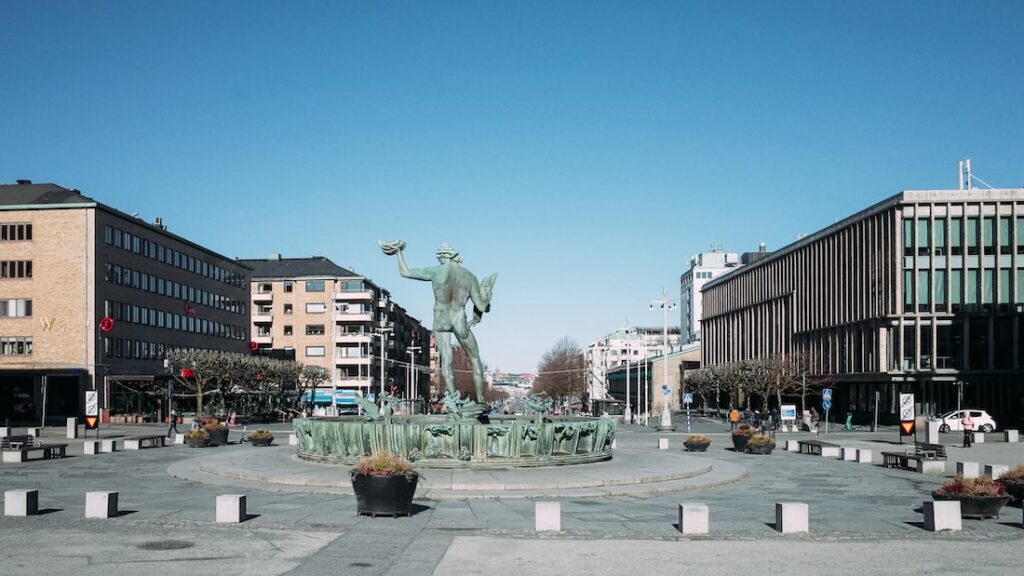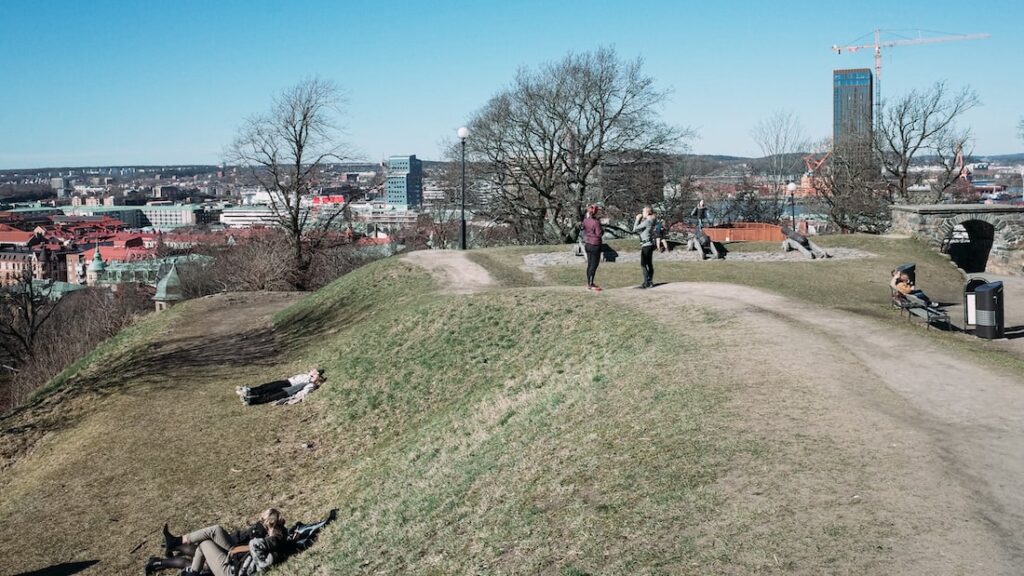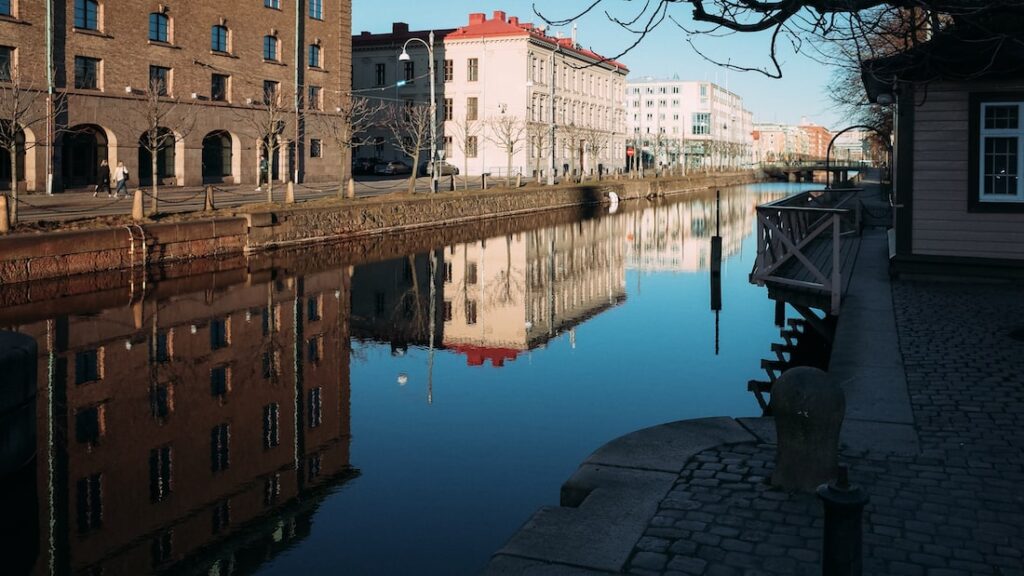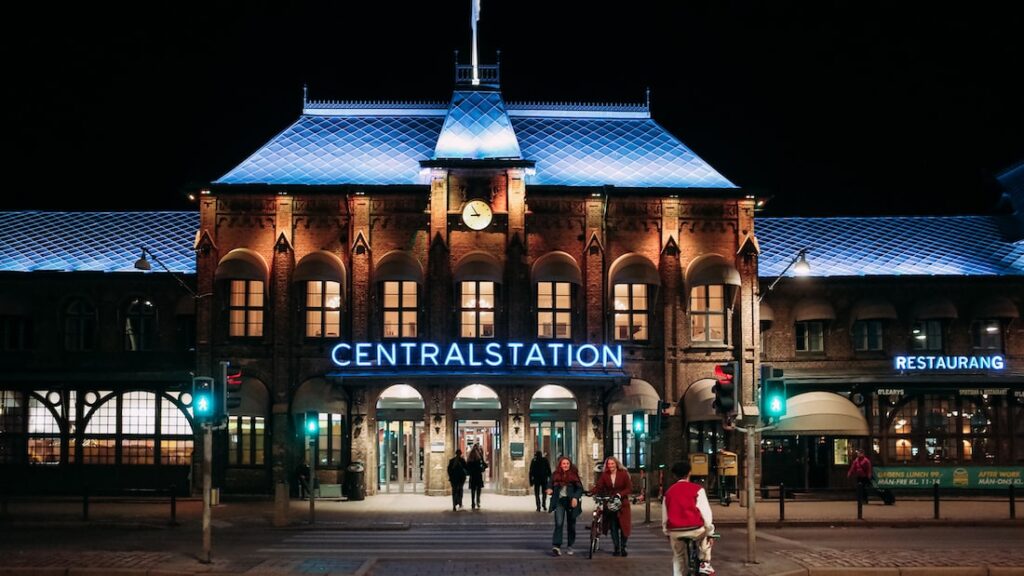Dear Barbara,
Here, Poseidon has his back turned to the morning light. It is a daring statue that wakes up slowly, later from Gothenburg itself, and seems indifferent to 20th-century culture. Both the Liseberg Amusement Park (1923) and the Museum of Modern Art (1925) stand behind the god of the sea. However, its placement is a matter of symbolism and not spatial planning: the statue was inaugurated in 1931.
This city at the mouth of the sea sent twenty thousand people to the inauguration of Poseidon at Götaplatsen. Some found the statue ugly. Others claimed that his genitals scandalized women and that sculptor Carl Milles had to redesign them. A myth may not have been built on this uphill square, but the words established a landmark.
Nevertheless, the statue remains there, doing what befits Poseidon: to protect the sea.
Avenyn, Gothenburg

Avenyn, Gothenburg’s main boulevard, stretches from Poseidon to the Grand Theater and is almost one kilometer long. It is pretty reminiscent of the Ringstrasse in Vienna; however, it is one of the quietest boulevards in Europe. On this street in the Lorensberg district are the most expensive shops and some of the city’s most magnificent buildings.
There is also an architectural paradox here: a neighborhood within a neighborhood called Örup. The buildings between the numbers 16 and 22 were designed in 1880 by architect Adrian C. Peterson and are made of white stone. They all have four floors, and their style is Neo-Renaissance. If anything sets them apart from other Avenyn buildings (commonly called Kungsportsavenyen), it’s their luxurious facades and intricate details.
Peterson himself lived in one of the buildings on the third floor of number 18.
The trams of Gothenburg

In the city center, trams pass accurately. They are blue and white and look compatible with the sea and the cloudy sky. Some have two lights in the middle; others have a light on each side. They are as popular as bicycles, but Gothenburg trams are not just a means of transportation.
Unlike other cities, where memory is statically honored in statues and museums, in Gothenburg, the tribute is (also) moving. Although Gothenburg trams are conventionally numbered based on their itineraries, each has been named after a person who left its mark on the city. You will find the names of actors and businessmen, writers and benefactors, footballers and politicians.
For example, tram 308 is dedicated to author Bengt Anderberg, 326 to actress Gunilla Gårdfeldt, and 369 to businessman Alexander Keiller. And the naming does not stop there: there are trams with the names of fictional characters that participate in the city’s collective subconscious, such as Ada (tram 376) and Ossborn (tram 311), cornerstone figures of Gothenburg’s folk mythology.
And, of course, tram 310 deserves a special mention: it is dedicated to the statue of Poseidon.
Haga

After a walk in the port, the afternoons drive to Haga on a rented bicycle. Gothenburg’s old working-class district has been transformed into a leisure destination full of cafés and small shops. But as income increases, the population decreases: four thousand people live there today – a hundred years ago, it was fifteen thousand.
In the shadow of the Skansen Kronan fortress, from where one can see a panoramic view of Gothenburg, Haga (as well as the nearby Majorna) houses buildings of unique interest. The so-called Landshövdingehus stand out because their ground floor is made of brick, but the two upper floors are wooden. These fragile buildings are witnesses of a peaceful city: the fortress cannons have never fired.
Time flies in this popular neighborhood, and everyone stops at Cafe Husaren for a gargantuan cinnamon bun. Fika is the word that describes in Swedish stopping the day and enjoying a coffee and time with friends. On sunny spring days, it isn’t easy to find a table. However, in relaxed cities like this, there is always a bench or terrace to bathe in the warm light.
Peaceful Gothenburg

As the familiar form of the world is unraveled, the city flies over the archipelago. Somewhere not so far away, a raging war destroys cities unnecessarily. With a history of only four hundred years, the peaceful Gothenburg saw a brief battle on its territory in May 1717. The Danes tried unsuccessfully to conquer it, as they failed to surprise the inhabitants: in five hours, they retreated defeated.
The failure of ambush may be a feature of the country. Two years into the pandemic, Gothenburg looks like an island of the pre-pandemic world. There are no measures and regulations, no one wears a mask, and the issue doesn’t make it to the top news. At the hotel, the only recommendation is for employees to wash their hands regularly; in shops, to keep the door open (if possible); if someone is not feeling well, they shouldn’t go to work.
Many words come up in conversations with the locals. If one assumes that every conversation is a sky and every word a cloud, then “trust” covers everything. It implies trust in the state, in science, and in interpersonal relations.
Time in Gothenburg

In cities in front of the water, time seems infantile. Unknown if this is their way of remembering, the visitor discovers that time is full of distortions, peculiar tributes, and dialectics between the distant past and the near future. There is, in other words, the suspicion that the flow of water affects the flow of time.
In Gothenburg, one will see a sculpture dedicated to the Dream in front of the train station. Three male figures stand on columns and shine in different colors at night. They hide their eyes, mouth, and ears and harmonize three times an hour in one color.
The train station, often a place of separation and tears, takes a different form at night in Gothenburg. The dream and the way to move away, not from a city but from reality, becomes a way of life.
If you add the trams, which move late at night and often through the fog, with their traffic lights on, we have the image of a city that tells elliptical travel stories. However, this is not a saga of the north. Instead, the narratives are reminiscent of lyrics from old songs, where every crossing from ambivalence to acceptance is made only through confession.
Älvsborg bridge

Shortly before departure, one last ride on the bike. A few kilometers away, the large Älvsborg bridge stretches like an arrow while the seagulls fly around. A dry wind blows, and a boat is pushed towards the archipelago. These islands that are not visible to the naked eye are enough reason to return to the city. Only beyond this bridge will the journey really begin.
A woman and a man are sitting on a bench with their eyes shut, holding hands. Most likely, they let the sun caress their faces. But maybe they dream of the train station and a trip beneath other skies.
Their return to the city will, of course, be self-evident. However, only if they are brave enough will they give their name to a tram: this is Gothenburg’s way of overcoming oblivion.
Love,
George
More about Gothenburg, Sweden: Gothenburg travel guide, Gothenburg’s Art Museum
Pin it for later

Did you enjoy reading Overcoming Oblivion in Gothenburg? Please share it with your friends on Social Media.
Last Updated on October 2, 2024 by George Pavlopoulos

